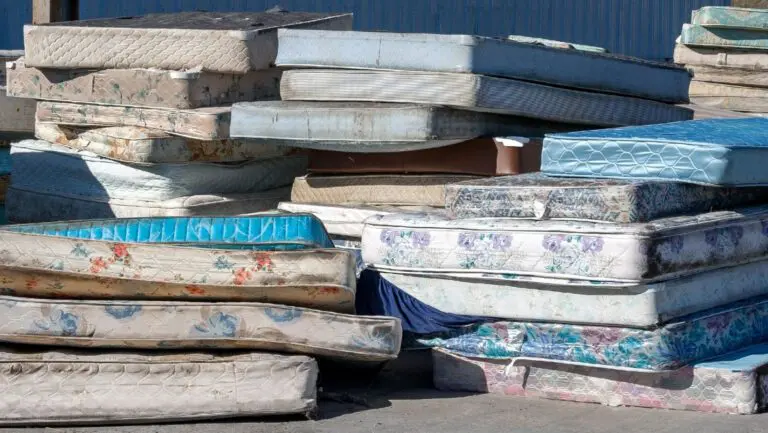Mattresses are one of the most problematic items in the waste stream. They take up enormous landfill space, break down slowly, and contain materials that can harm the environment if not properly recovered. As cities push for greener solutions and households replace mattresses more frequently, the role of mattress recycling companies has become essential. These specialized facilities help transform bulky, discarded mattresses into valuable materials that can be reused instead of wasted.
Why Mattresses Create a Major Waste Problem
Traditional disposal methods are no longer sustainable. Mattresses create unique challenges for landfills and waste management systems.
Bulky and Hard to Compress
A single mattress can occupy up to 40 cubic feet of landfill space. The springs make them difficult to compact, reducing landfill efficiency.
Slow Decomposition
Foam, textiles, wood, and steel take decades—or even centuries—to break down naturally, contributing to long-term environmental strain.
Risk of Contamination
Mattresses often contain adhesives, flame retardants, and synthetic materials that can contaminate soil and groundwater if improperly disposed of.
High Transportation Costs
Their size and structure make them expensive to transport, increasing environmental and operational costs.
Because of these issues, recycling has become the most responsible and practical approach.
How Mattress Recycling Works
Recycling a mattress requires more than simply shredding materials. The process is designed to maximize recovery and minimize waste.
Step 1: Manual or Mechanical Dismantling
Workers or machines carefully separate a mattress into its major components: foam, fibers, wood, and metal.
Step 2: Material Sorting
Each material is sorted to ensure clean, uncontaminated batches suitable for recycling.
Step 3: Processing and Recovery
- Steel springs are melted down and reused in manufacturing.
- Foam can be repurposed into carpet padding, insulation, or cushioning.
- Textile fibers may be used in industrial filters, padding, or stuffing.
- Wood can be chipped for landscaping mulch or biomass fuel.
Step 4: Final Quality Check
Recycled materials undergo inspection before being sent to manufacturers for reuse.
Right in the middle of streamlining these waste-reduction processes and maximizing recovery rates, companies like mattress recycling company Recyc-Matelas demonstrate how specialized systems can turn bulky waste into valuable resources through advanced dismantling and material separation procedures.
How Mattress Recycling Companies Reduce Waste Effectively
Recycling facilities apply science, engineering, and environmental expertise to reduce landfill pressure.
Diverting Thousands of Mattresses from Landfills
A single recycling center can divert tens of thousands of mattresses per year, significantly reducing landfill volume.
Recovering Up to 95% of Materials
Because mattresses contain high-value components like steel and foam, most of the material can be reused instead of discarded.
Reducing Greenhouse Gas Emissions
Recycling materials, especially steel and foam, uses far less energy than creating new materials from scratch.
Supporting Circular Economy Practices
Recovered materials re-enter the manufacturing cycle, promoting sustainability and reducing reliance on raw resources.
Environmental and Economic Benefits
Mattress recycling positively impacts both the environment and local communities.
Lower Waste Management Costs
Cities and municipalities save money by reducing landfill strain and transport needs.
Job Creation
Recycling facilities employ workers in dismantling, sorting, administration, and logistics.
Cleaner Communities
Fewer illegally dumped mattresses help keep public spaces cleaner and safer.
Improved Manufacturing Efficiency
Industries benefit from affordable, recycled raw materials that perform just as well as new ones.
What to Look for in a Reliable Mattress Recycling Provider
Consumers, cities, and retailers should choose recycling partners based on:
High Material Recovery Rates
The best companies recover more than 85–95% of mattress components.
Safe and Environmentally Friendly Processes
Facilities should follow strict environmental protocols to ensure safe dismantling and processing.
Strong Reputation and Certifications
Look for compliance with recycling standards, environmental regulations, and industry best practices.
Convenient Collection Systems
Some companies offer drop-off locations, municipal partnerships, or scheduled pickups.
Recycling Makes a Real Difference
A mattress recycling company plays a crucial role in reducing waste, conserving resources, and protecting the environment. By breaking down mattresses into reusable materials, these companies help communities shift toward sustainable waste management practices. Instead of filling landfills with bulky, long-lasting waste, recycled mattresses become new products, new resources, and new opportunities—proving that smart recycling truly creates long-term environmental value.



